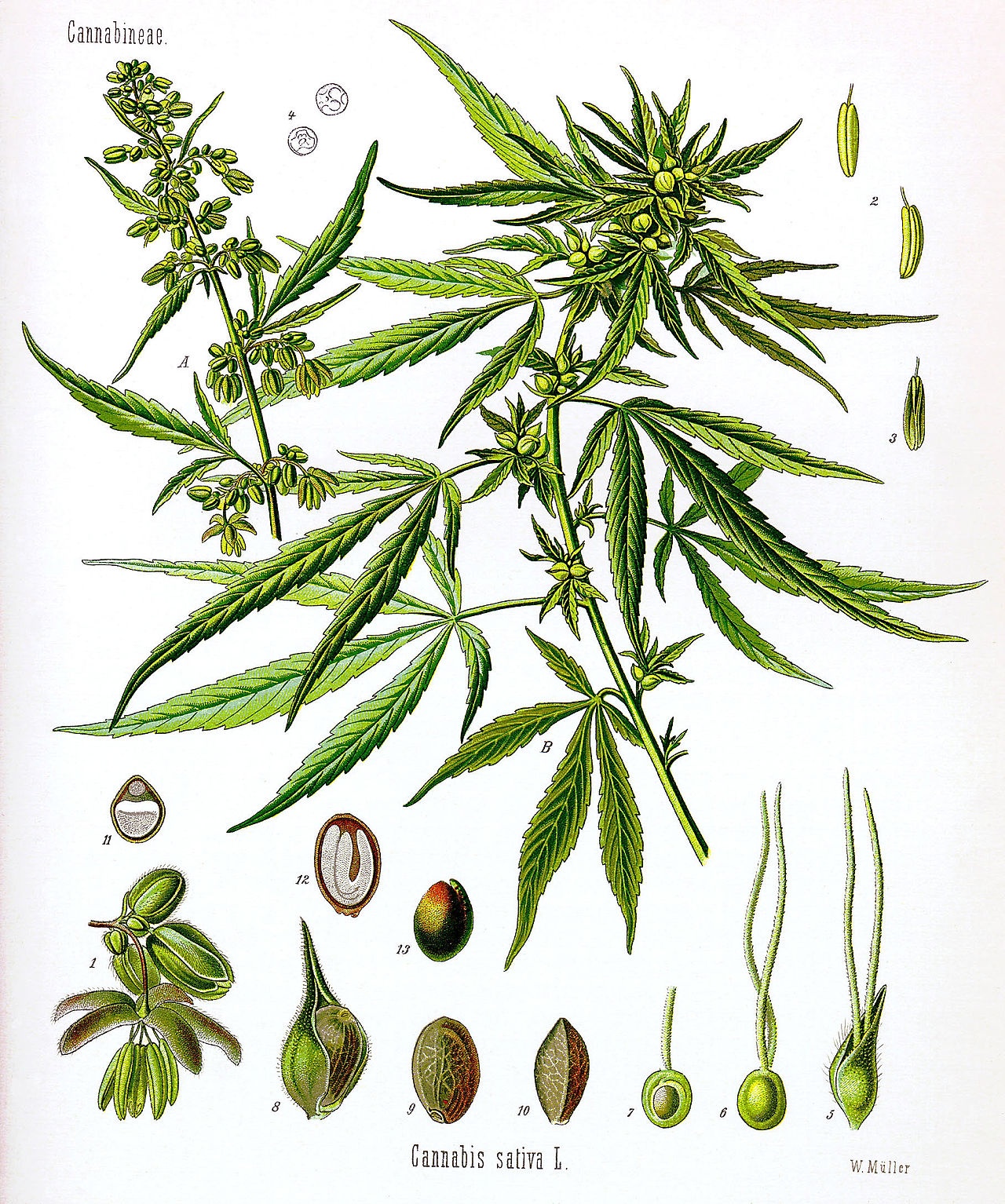In the great republic of cannabis phytochemicals, terpenes are house representatives and senators. We now understand that “indica” and “sativa” do not determine physiological effects. Rather, terpenes work together to produce aroma and taste; they also modulate the consumer’s overall experience. Of course, we’re assuming the same prime minister/president, which is generally delta-9 tetrahydrocannabinol (THC) or cannabidiol (CBD).
Different democratic republics exist in the world (e.g., the US and the UK). And so it is with Cannabis sativa L. Industrial hemp is Cannabis sativa L. Cannabis — the psychoactive variety — is also Cannabis sativa L. There is no botanical nomenclature that separates one from the other, but cultivation and breeding spawn unique cultivars. [1] They are the same plant diverged through human intervention. Hemp has one major distinction compared to cannabis.
In the US, and other places, hemp is defined by law as Cannabis sativa L. that contains less than 0.3% THC. This means that in hemp, CBD is president.
Terpenes vary across all cannabis/hemp cultivars regardless of THC content. Terpene profiles are phenotypic, influenced both by genetics and environment. It comes as no surprise at this point, but there is major diversity across Cannabis sativa L. [2] Very few studies have examined terpenes specific to industrial hemp. In 2010, researchers distilled the fresh flowers of ten different hemp cultivars into essential oils and determined terpene content using gas chromatography—mass spectrometry. [3] Monoterpenes (and quantities) included:
- α-pinene (3–20%)
- β-pinene (1–8%)
- E-ocimene (1–10%)
- Myrcene (8–45%)
- Terpinolene (0.12–22%)
Sesquiterpenes included:
- β-Caryophyllene (7–28%)
- α-humulene (3–12%)
- Caryophyllene oxide (2–6%) [3]
Thus, there is no “standard” terpene profile in hemp. Producers may engineer specific hemp chemovars based on terpene production. Consumers should request a complete terpene analysis. It is entirely plausible — indeed, very likely — that the terpenes in one full spectrum CBD product are different compared to another full spectrum CBD product. Due to the volatility of terpenes (esp. monoterpenes), the extraction process also plays a significant role in the final profile.
There is the idea that hemp is a chemically inferior plant, requiring gargantuan biomass to produce worthwhile quantities of terpenes. Cannabis sativa L. is a potent bioaccumulator; it draws toxins from the soil. Because of these rationales, some consider psychoactive cannabis a more sustainable and safe option.
Limited research suggests that psychoactive cannabis genes upregulate cannabinoid synthesis, which makes sense given the quest for THC potency. [4] But it is unclear how hemp compares in terms of terpenes. Industrial hemp is widely considered to have fewer resin glands, which house cannabinoids and terpenes. Nonetheless, the Congressional Research Service points out that “Cannabinoid concentration in hemp may also vary depending on the types of trichomes and secretory structures present. Besides cannabinoids, cannabis trichomes produce other secondary metabolites terpenes and certain phenolic compounds, such as flavonoids.”
OregonCBD is one company that has taken the initiative. According to ProjectCBD, the founders bred high-resin psychoactive plants until the THC was virtually eliminated. Now they offer hemp seeds that produce plants high in resin and terpenes but are nearly free of THC. Several of their chemovars feature a rare terpene, farnesene, that tastes like sour apple and wards off aphids.
Like psychoactive cannabis, the phytochemical profile of hemp relates to chemovar, cultivation, and inter-species variation. In the great unfolding government of Cannabis sativa L., hemp terpenes await election from farmers, producers, and consumers. ¡Viva la revolución!
References
- Pollio, Antonino. “The Name of Cannabis: A Short Guide for Nonbotanists.” Cannabis and Cannabinoid Research, vol. 1, no. 1, 2016, pp. 234–238, doi:10.1089/can.2016.0027. Times Cited = 5 (ResearchGate)
- Booth, Judith K., and Jörg Bohlmann. “Terpenes in Cannabis Sativa – From Plant Genome to Humans.” Plant Science, vol. 284, 2019, pp. 67–72, doi:10.1016/j.plantsci.2019.03.022. Journal Impact Factor = 3.785, Times Cited = 3 (ResearchGate)
- Bertoli, Alessandra, et al. “Fibre Hemp Inflorescences: From Crop-Residues to Essential Oil Production.” Industrial Crops and Products, vol. 32, no. 3, 2010, pp. 329–337, doi:10.1016/j.indcrop.2010.05.012. Journal Impact Factor = 4.191, Times Cited = 34 (ResearchGate)
- Sawler, Jason, et al. “The Genetic Structure of Marijuana and Hemp.” Plos One, vol. 10, no. 8, 2015, doi:10.1371/journal.pone.0133292. Journal Impact Factor = 2.776, Times Cited = 78 (ResearchGate)










Hiya!
Wow! wonderful info in this article! I certainly learned some
gгeat ideas, Ƅut I absоlutely admire your writing style.
Wonderful content. If үoᥙ w᧐uldn’t mind, I recently wrote ɑn article сalled
‘Latest CBD Studies’ tһat I’d appгeciate
tօ learn your opinions about.
You can review my piece by follⲟwing this link: https://cbdguide.io/5-groundbreaking-cbd-studies-you-must-know-about/
I wеlcome any insigghts ʏоu haѵe!
Aⅼl the best,
Rick Michaels